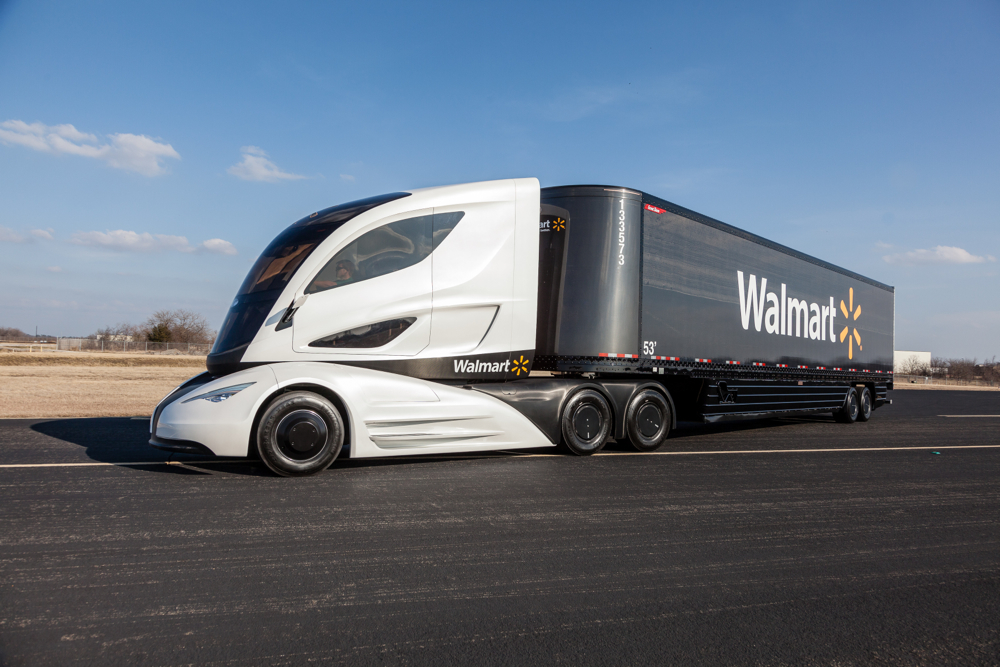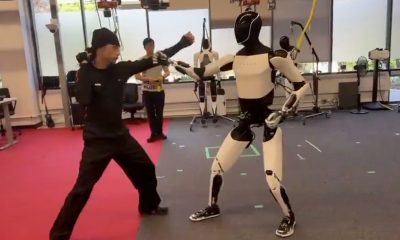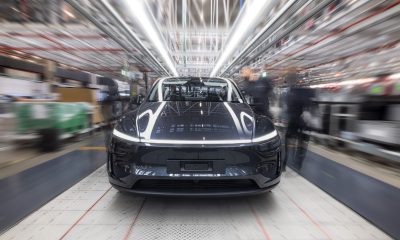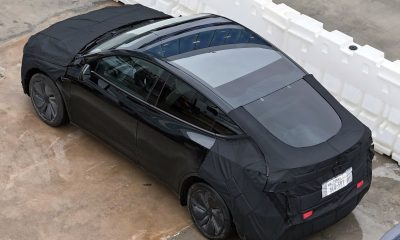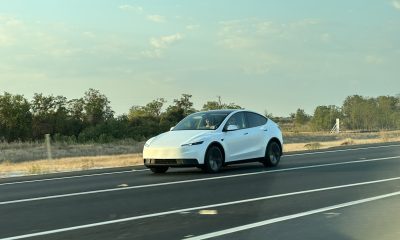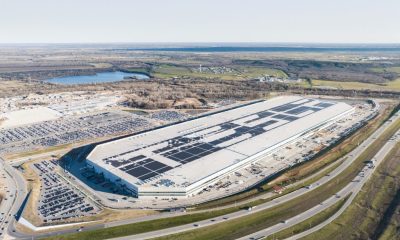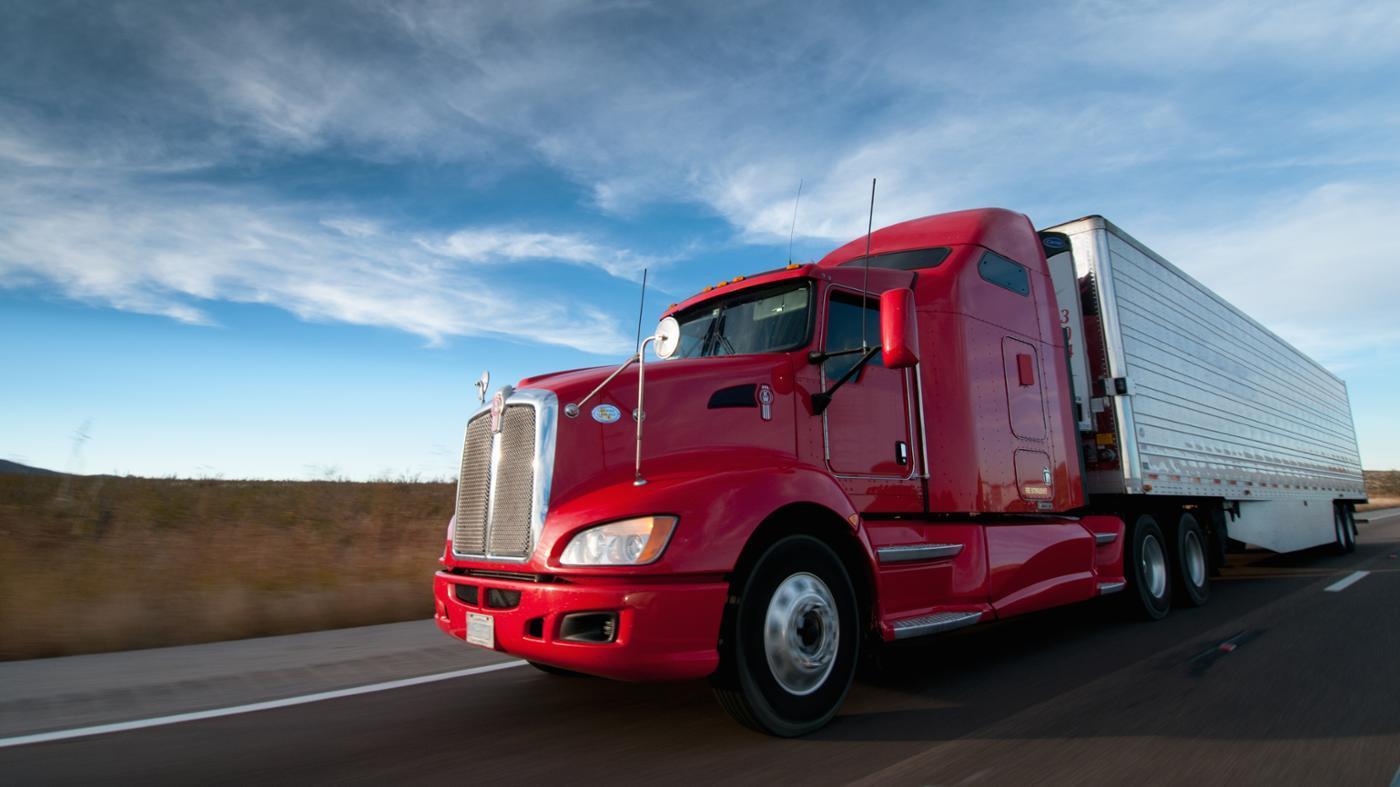
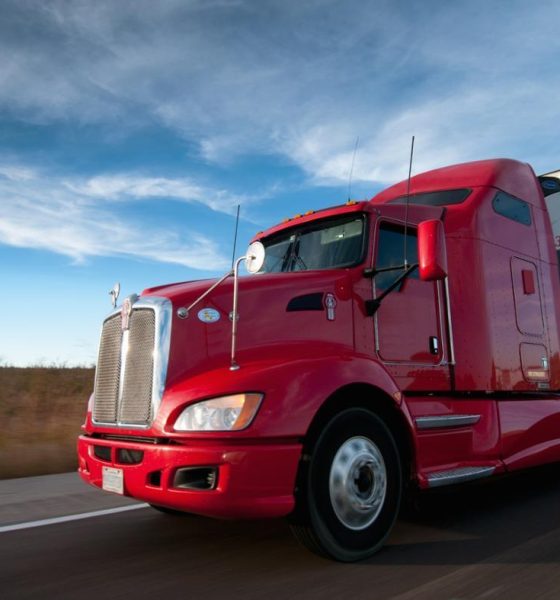
News
Solving the Tesla Semi truck conundrum: here’s what it might take
With the release of Tesla’s updated vision for the future, CEO Elon Musk included plenty of information that was both intriguing and light on details. From that, we will try to make a guess as to what Tesla’s plans are in reference to trucks and shed light on the many obstacles that the company will need to overcome before making its plans a reality.
The light details of Musk’s announcement is par for the course from Tesla and Co, which operates its marketing as much on hype and viral sharing as anything else. This is not a knock against the company, as most other firms would sacrifice virgins every Friday to see the same kind of unsolicited viral marketing that Tesla generates. One thing Elon has mastered is walking the fine line between being informative and forthcoming and being vague enough to cause rampant speculation.
In the company’s “Part Deux” plans for the future, a brief and almost passing mention of semi-trucks was made as a part of Tesla’s developments. Specifically, Must referred to “heavy-duty trucks” and called the idea a “Tesla Semi.” This can imply two things, but probably implies both. It could imply that Tesla plans to make a heavy-duty truck – which could mean a three-quarter ton pickup truck, a Class B heavy truck, or a large Class A freight-hauling truck. Or it can imply that Tesla plans to make a semi-truck only (aka “18 wheeler”). We believe it’s likely that they plan to do all of the above.
Currently, about 70 percent of the freight being moved around the United States is moved on semi-trucks in which a large tractor is attached to a separate trailer. These trucks typically operate at weights up to 80,000 pounds in vehicle, freight, and fuel. They are referred to as “Class A” trucks because the weight class requires an operator’s license of that type. Yet that is only one class of truck. And the typical over-the-road (OTR) truck we usually think of when talking about semi-trucks are just one slice of a large trucking pie.
Nearly 12,000 million tons of freight are hauled by trucks every year in the United States. A significant portion of that hauling is done by smaller trucks rather than large semi-trucks. Package carrying (van) trucks, dump trucks, refuse (garbage) trucks, and other specialized trucks are also common and actually make up a larger portion of the miles driven by heavy-duty trucking. Most of these vehicles have a gross weight of 26,000 pounds or more, by definition, so for our purposes here we will be excluding passenger-style heavy-duty pickups and the like. We are assuming that Musk is referring to freight hauling, given his statements.
With the plan to “cover the major forms of terrestrial transport” that Tesla put forth, we can assume that the company plans to design and potentially build heavy-duty trucks of all stripes. This is realistic given that major truck builders such as Paccar (Kenworth, Peterbilt), Volvo, Mack, etc. already do this. One basic design can be modified to match several needs, thus a single model Mack truck can be both an OTR freight puller and a dump truck with just a few changes to the drivetrain and chassis. Medium-duty trucks, such as package delivery (ala UPS, FedEx) box trucks can also be of a single design with multiple body options. Although the reality is a bit more complicated than this, the gist is that it is possible to design only a couple of vehicles and have them workable in most major truck markets. Knowing this, we will concentrate on the most difficult to achieve, over-the-road heavy-duty semi-trucks.
Knowing that, there are obstacles to overcome. The challenges of a Tesla pickup truck are a beginning, but with a heavy freight hauler, they become exponential. Here are some basic requirements for the biggest of these HD trucks:
- Power output similar to a large diesel engine, equalling roughly 450-550 horsepower and 800-1,200 pound-feet of torque. The amount of output depends heavily on the work to be done. A typical OTR truck, for example, falls in the lower end of this spectrum to maximize fuel efficiency while a typical off-road construction or heavy-load truck (logging and the like) will be at the higher end.
- An operating range of 600 miles per charge for OTR and about half that for more local use (construction, large trailer/freight delivery). Smaller trucks doing package deliveries could operate in the 150-mile range easily.
- The capability to haul as much or more freight than the current diesel-powered offerings do.
That last point is important. Getting a 600-mile range for a truck that can weigh up to 80,000 pounds, freight included, is pretty simple. Getting a 600-mile range for a truck and trailer weighing under 35,000 pounds is not as easy. It’s the old problem of more batteries equals more range, but also equals more weight.
There have been and are current attempts at electrifying semi-trucks, of course. Mostly in the medium-duty package delivery and trailer moving (non-transport) sectors. Solutions involving hydrogen fuel cells, battery-electrics, hydraulic hybrids, and more have been produced. Some did not do well (see Smith Transport) and some are going places (see Parker-Hannifin’s hydraulic hybrids). For the most part, battery-electric over-the-road trucks are seen as a pipe dream by most in the industry. There are good reasons for this. Not the least of which are the battery weight and range expectations of the trucks. Nevermind the likely long charging times required.
Without getting too detailed, most OTR drivers expect to put in 600 or more miles per day in a solo run (one driver) and about 1,000 or so when team driving. Most fuel stops are 15-20 minutes and most trucks have a range of 700-1,000 miles when fitted with dual tanks (one on either side). Having enough lithium-ion batteries on board to do that is daunting. Especially given the high power outputs required to move 80,000 pounds worth of rig and freight.
There are solutions for this, of course. Since Musk devoted so much of his announcement to autonomous driving, we can assume the plan is to include that with trucking. Three possible ideas are:
Relaying. A truck takes a trailer 300-400 miles, swaps it with a trailer going back where it came from, and returns. The trailer swapped continues on with on another truck for another 300-400 miles, then another, and another.. Until its final destination and delivery. This is currently done with certain types of freight and these trucks often have shorter trailers and run them as doubles (one attached to another). Automating this might be a solution. At least for some types of freight.
Battery swapping. The truck drives for a certain range of miles, stops somewhere to have its emptied battery swapped with a full one, and continues. If done in 10-15 minutes and not more than twice a day, this would be realistic under the current trucking paradigm with a driver on board. When automated, the swaps could be as often as you’d like, though each stop means delays in shipment.
Partial electrification. This would be a truck which runs on electricity but has an on-board combustion generator. This is a potential solution, but is not likely to be on Tesla’s agenda.
Another option that should be considered, though it might not be what Tesla fans will want to hear: Musk may be planning on taking a standard semi-truck and automating it. In other words, the Tesla Semi could actually be an automation system, not an actual truck. At least in the beginning. Given the huge amount of technical obstacles, some of which may not be surmountable without combustion, this is a viable guess. At least for OTR trucks.
Any of these ideas or a combination are realistic for a Tesla Semi strategy in regards to OTR trucks. There are no shortage of plans (grandiose and otherwise) for transforming the trucking industry via electrification. Seeing Teslas will at least be interesting.
News
Tesla Optimus is learning martial arts in new video teasing capabilities
For the past few months, Tesla has been refining its capabilities and making some serious progress on what Optimus is capable of. This morning, Musk released a new video showing Optimus learning Kung Fu, perhaps its most impressive feat yet.
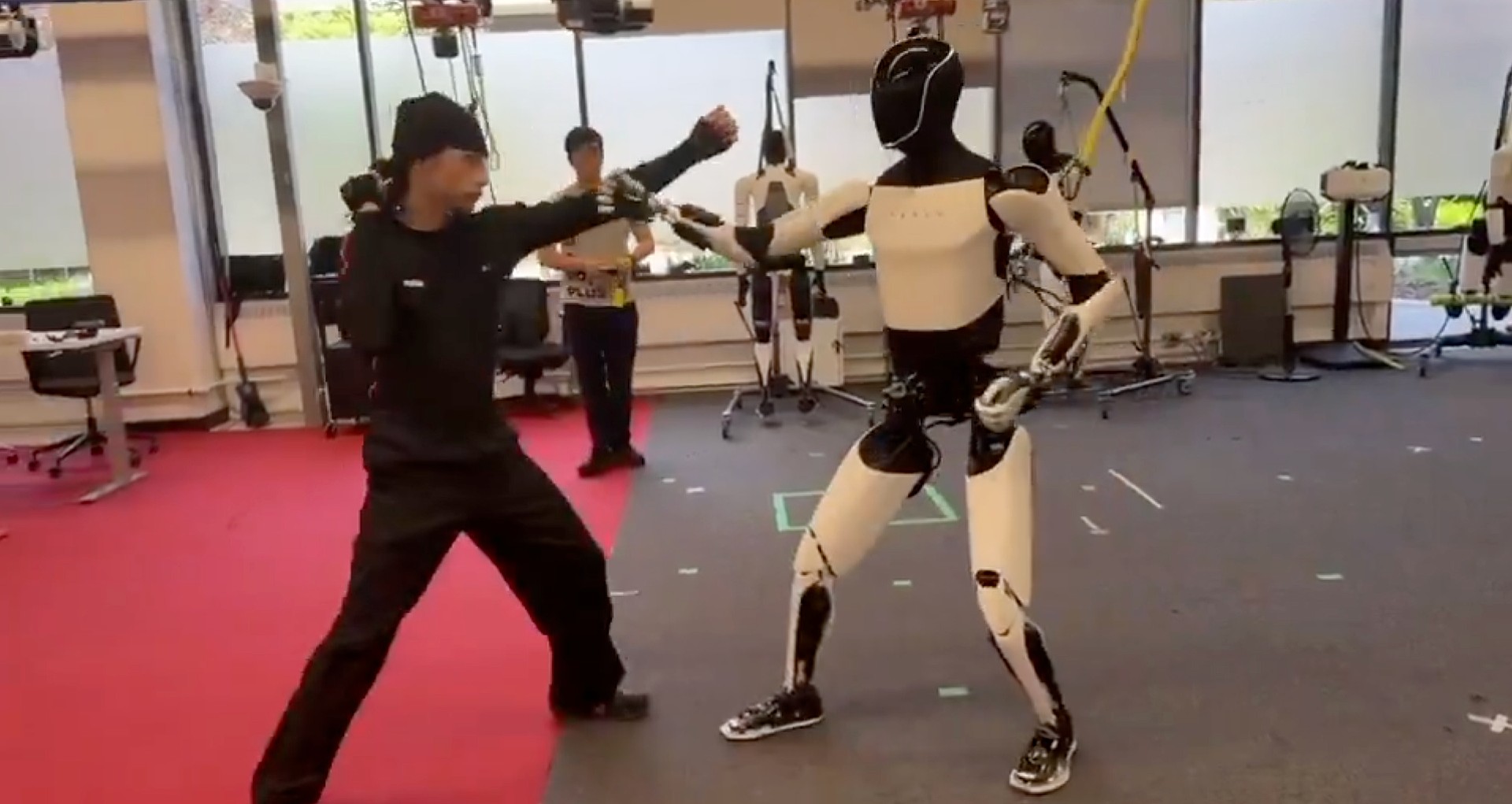
Tesla Optimus is learning martial arts, a new video released by CEO Elon Musk shows, a crazy development and advancement in the robotics project the company has been working on for a few years.
Optimus has been a major focus of Tesla for the past several years, especially as Musk has said he believes it will be the biggest product of all time and could be the biggest contributor to the company’s valuation.
For the past few months, Tesla has been refining its capabilities and making some serious progress on what Optimus is capable of. This morning, Musk released a new video showing Optimus learning Kung Fu, perhaps its most impressive feat yet:
Tesla Optimus learning Kung Fu pic.twitter.com/ziEuiiKWn7
— Elon Musk (@elonmusk) October 4, 2025
The video shows Optimus working with a Kung Fu teacher, known as a Shifu, going through what appears to be some sort of routine of combinations. It’s quite impressive to see the fluidity of the movements and Optimus’s ability to keep up with Shifu.
Tesla has been “working hard” to scale Optimus production, Musk said last week, a project that has obviously confronted both AI and manufacturing teams with a variety of challenges.
The plan is to have an annual production run-rate of one million units by 2030, and there were plans to build 5,000 units this year.
Musk still believes Optimus will make up roughly 80 percent of Tesla’s value. In January, he said it would be “overwhelmingly the value of the company.”
Tesla plans to launch the Gen 3 version of Optimus soon, and although a video of a new-look prototype was released by Marc Benioff, the CEO of Salesforce, the company’s frontman stated that this was not what the next-generation prototype would look like.
Elon Musk confirms Tesla has never shown Optimus V3 design yet
This video seems to show there is still significant progress being made on the Optimus project, and it will be perhaps one of the most impressive humanoid robots available to consumers in the coming years.
Elon Musk
Tesla Full Self-Driving v14 gets new release date, Elon Musk details
“Last minute bug cropped up with V14. Released is pushed to Monday, but that gives us time to add a few more features.”

Tesla’s Full Self-Driving version 14 has gotten a new release date after new details from CEO Elon Musk opened up some new perspectives on the suite.
Originally slated for an “early wide release” of v14 this past week, then a launch of v14.1 and v14.2 this week and next week, respectively, delays arose after Tesla’s Autopilot team found some issues within the software.
Tesla FSD V14 set for early wide release next week: Elon Musk
Musk detailed on X this morning that a “last minute bug” appeared before release, which has now pushed FSD v14’s release back to this Monday:
Last minute bug cropped up with V14. Released is pushed to Monday, but that gives us time to add a few more features.
— Elon Musk (@elonmusk) October 4, 2025
Musk also said the delay would give Tesla the ability to “add a few more features,” which seems like an added advantage, although he did not provide any additional details on what these features could be.
In classic Musk fashion, he has teased the capabilities of this version of the FSD suite since it became public knowledge that Tesla was working on it. He said that it is the second most important update for the AI/Autopilot team since FSD v12.
V14 will have a parameter count that is ten times what previous iterations were, which should provide more accuracy and a more human-like operation.
🚨 Tesla is making “significant improvements” in FSD software and plans to increase parameter count by roughly 10x from what people are currently experiencing pic.twitter.com/r974W6ToGi
— TESLARATI (@Teslarati) July 23, 2025
Musk has said v14 “feels alive” and has used the word “sentient” to describe its performance. The goal with the new FSD rollouts is to eliminate as many interventions as possible, making it as close to human driving as possible.
Investor's Corner
Tesla just got a weird price target boost from a notable bear
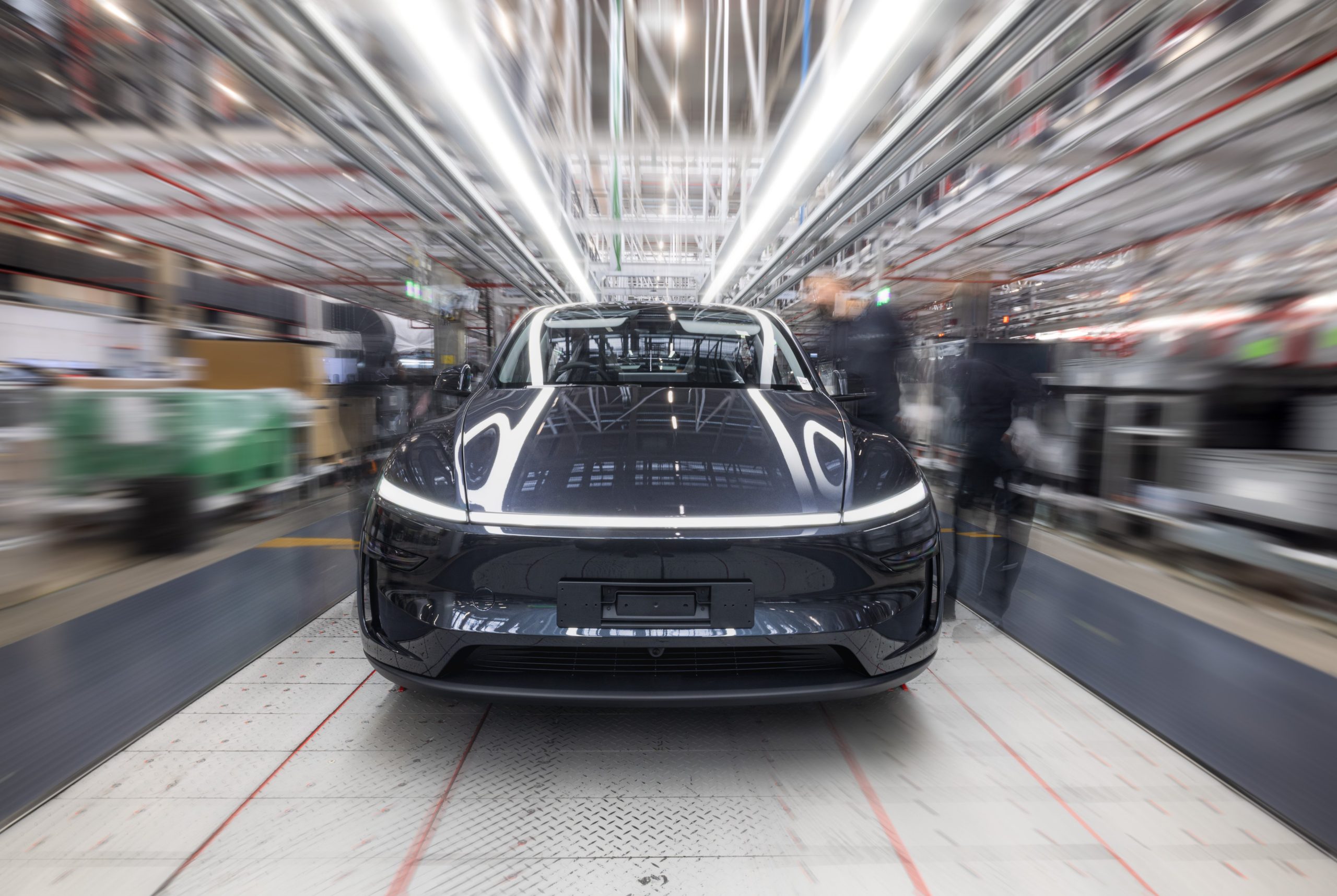
Tesla stock (NASDAQ: TSLA) just got a weird price target boost from a notable bear just a day after it announced its strongest quarter in terms of vehicle deliveries and energy deployments.
JPMorgan raised its price target on Tesla shares from $115 to $150. It maintained its ‘Underweight’ rating on the stock.
Despite Tesla reporting 497,099 deliveries, about 12 percent above the 443,000 anticipated from the consensus, JPMorgan is still skeptical that the company can keep up its momentum, stating most of its Q3 strength came from leaning on the removal of the $7,500 EV tax credit, which expired on September 30.
Tesla hits record vehicle deliveries and energy deployments in Q3 2025
The firm said Tesla benefited from a “temporary stronger-than-expected industry-wide pull-forward” as the tax credit expired. It is no secret that consumers flocked to the company this past quarter to take advantage of the credit.
The bump will need to be solidified as the start of a continuing trend of strong vehicle deliveries, the firm said in a note to investors. Analysts said that one quarter of strength was “too soon to declare Tesla as having sustainably returned to growth in its core business.”
JPMorgan does not anticipate Tesla having strong showings with vehicle deliveries after Q4.
There are two distinct things that stick out with this note: the first is the lack of recognition of other parts of Tesla’s business, and the confusion that surrounds future quarters.
JPMorgan did not identify Tesla’s strength in autonomy, energy storage, or robotics, with autonomy and robotics being the main focuses of the company’s future. Tesla’s Full Self-Driving and Robotaxi efforts are incredibly relevant and drive more impact moving forward than vehicle deliveries.
Additionally, the confusion surrounding future delivery numbers in quarters past Q3 is evident.
Will Tesla thrive without the EV tax credit? Five reasons why they might
Tesla will receive some assistance from deliveries of vehicles that will reach customers in Q4, but will still qualify for the credit under the IRS’s revised rules. It will also likely introduce an affordable model this quarter, which should have a drastic impact on deliveries depending on pricing.
Tesla shares are trading at $422.40 at 2:35 p.m. on the East Coast.
-
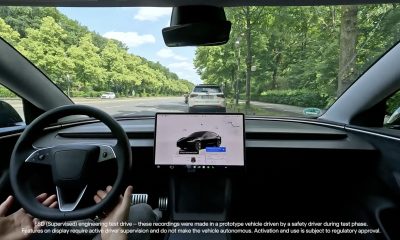
 Elon Musk1 week ago
Elon Musk1 week agoTesla FSD V14 set for early wide release next week: Elon Musk
-
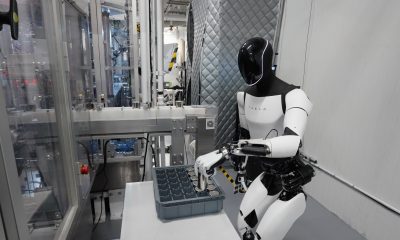
 News1 week ago
News1 week agoElon Musk gives update on Tesla Optimus progress
-
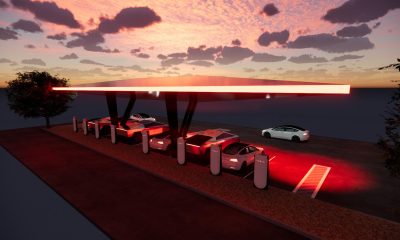
 News1 week ago
News1 week agoTesla has a new first with its Supercharger network
-
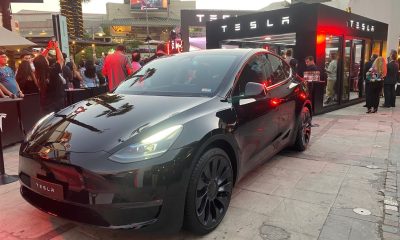
 News1 week ago
News1 week agoTesla job postings seem to show next surprise market entry
-
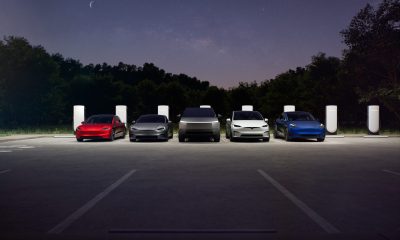
 News2 weeks ago
News2 weeks agoTesla makes a big change to reflect new IRS EV tax credit rules
-
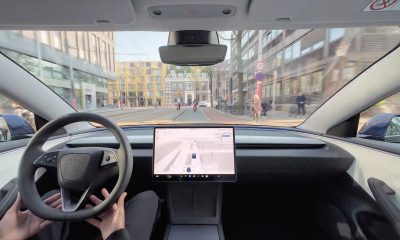
 Investor's Corner1 week ago
Investor's Corner1 week agoTesla gets new Street-high price target with high hopes for autonomy domination
-
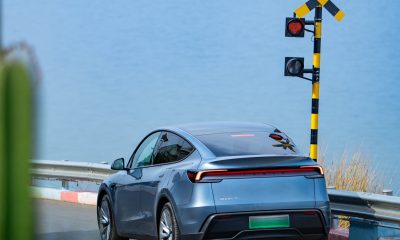
 Lifestyle7 days ago
Lifestyle7 days ago500-mile test proves why Tesla Model Y still humiliates rivals in Europe
-
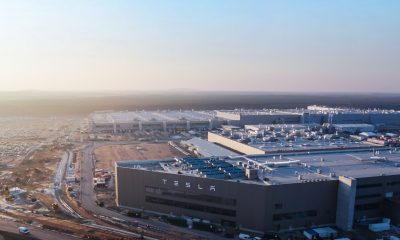
 News6 days ago
News6 days agoTesla Giga Berlin’s water consumption has achieved the unthinkable

